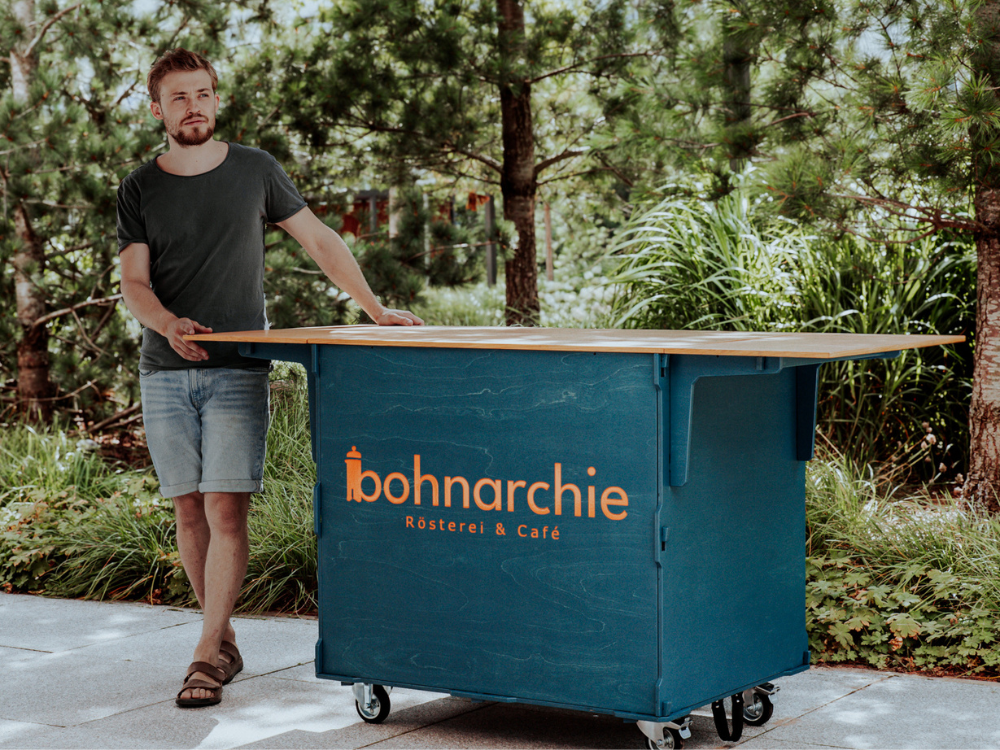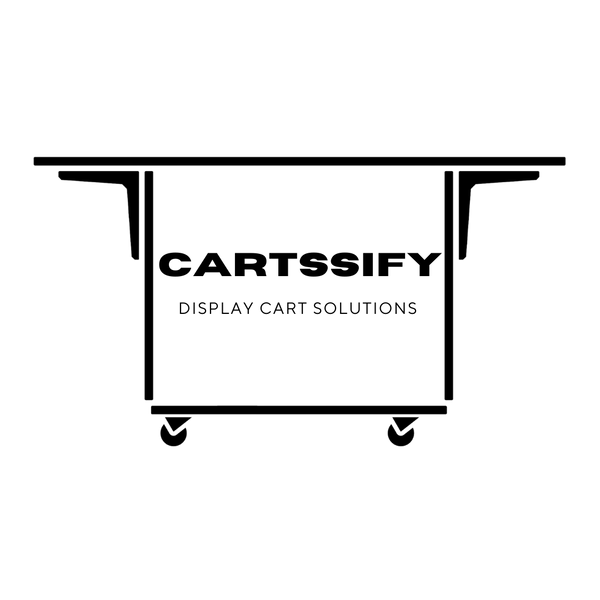
Best Practices for Setting Up a Mobile Display Cart at Events
Share
Setting up a mobile display cart at events like trade shows, markets, and pop-up shops is a great way to showcase your products in a flexible and eye-catching manner. However, to make the most out of your cart, it’s essential to optimize your setup. This blog post will guide you through the best practices to ensure your mobile display cart stands out and maximizes sales opportunities.
1. Choose the Right Location for Your Cart
The first step to setting up your mobile display cart is selecting the ideal location at the event. A strategic placement can make all the difference in attracting foot traffic. Here are some tips to ensure your cart is positioned optimally:
- Find High-Traffic Areas: Place your cart where most of the attendees will pass by, such as near entrances, exits, or along the main walkways.
- Consider Visibility: Make sure your cart is not blocked by larger displays or hidden in corners. People should be able to see your cart from different angles.
- Take Event Theme into Account: If the event has a particular theme, choose a spot where your cart’s design and product offerings align with the overall vibe.

2. Prioritize Accessibility and Flow
When setting up your mobile cart, think about the flow of traffic around your display. You want customers to engage with your cart without creating bottlenecks or confusion.
- Ensure Easy Access: Arrange your cart so that customers can approach from multiple sides. Consider open shelving or rotating displays that allow people to browse from different directions.
- Keep Your Space Uncluttered: While it’s tempting to showcase everything, overloading your cart can overwhelm customers. Focus on key products that are easy to reach and understand at a glance.
- Plan Your Checkout Process: Designate a clear space for transactions, whether it’s a small counter or side table where customers can make purchases or ask questions.

3. Customize Your Cart to Fit the Event
The beauty of mobile display carts is that they can be customized to fit the occasion. Whether it's an outdoor farmers market or a sleek indoor trade show, make sure your cart design matches the theme and audience.
- Adapt Your Cart for Outdoor Events: If you're participating in an outdoor market or festival, consider adding features like canopies for shade or weights to keep your cart stable in windy conditions.
- Add Branding and Signage: Customize your cart with your logo, colors, and signs that make it easy for passersby to understand what you’re selling. Bold, visible signage can help draw attention from a distance.
- Utilize Lighting for Indoor Events: In dimly lit indoor venues, use portable LED lights to illuminate your products and make your cart stand out.

4. Showcase Products Effectively
How you display your products on the cart can have a significant impact on customer engagement and sales. Use your cart space wisely to create an appealing and organized presentation.
- Group Products by Category or Theme: Organize your products in a way that makes sense to your customers. Group similar items together and arrange them in tiers, with the most popular or eye-catching products at eye level.
- Use Vertical Space: If your cart design allows, take advantage of vertical space with shelves or hooks. This not only creates more room but also makes it easier for customers to view everything without bending down.
- Rotate Featured Items: If you’re offering a variety of products, rotate featured items throughout the day to keep your display fresh and engaging.

5. Engage with Customers and Build Connections
Your mobile cart is more than just a display; it’s an opportunity to interact with your customers and build connections that can lead to repeat business.
- Be Approachable and Friendly: Your presence at the cart is essential. Smile, greet passersby, and invite them to check out your offerings. Avoid staying behind the cart the entire time; instead, move around and engage with potential customers.
- Offer Demos or Samples: If possible, offer samples or demonstrations to engage people and get them interested in your products. This is particularly effective for food and beverage carts, but even retail carts can offer a hands-on experience.
- Collect Contact Information: Use the opportunity to collect email addresses or social media followers. Offer a special discount or incentive in exchange for subscribing to your newsletter or following your brand.

6. Prepare for Quick Setup and Breakdown
One of the key benefits of a mobile display cart is its portability. However, to maximize efficiency, make sure you have a quick setup and breakdown plan for events.
- Use Flat-Pack Designs: If your cart can be flat-packed for easy transport, practice setting it up and breaking it down ahead of time to streamline the process at events.
- Keep Tools Handy: Ensure you have all necessary tools and parts for assembly, and store them in a designated area on or near the cart.
- Pack Strategically: After each event, pack your cart items in the order that you’ll need them for the next setup. This can make the process faster and less stressful.

